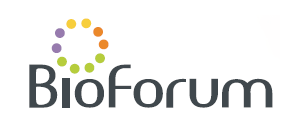Discovering Medical Biomarkers and Drugs in Whole Blood using GC-MS with Cold EI and ‘WIN’ Software
Benny Neumark, School of Chemistry, Tel-Aviv University, Tel Aviv, Israel (benjaminn@mail.tau.ac.il)
Tal Alon, School Of Chemistry, Tel-aviv University, Tel Aviv, Israel
Oneg Elkabets, School Of Chemistry, Tel-aviv University, Tel Aviv, Israel
Aviv Amirav, School Of Chemistry, Tel-aviv University, Tel Aviv, Israel
In personalized medicine, comprehensive whole-blood analysis is crucial for diagnosing and monitoring various health conditions. Traditional methods are invasive, and taking a sample from newborns and drug addicts' veins is a challenge. In addition, it involves long and tedious sample preparation and delivers limited lipidomic data, which can delay critical diagnostics, especially in emergencies like drug overdoses and early cancer detection. To address these challenges, our novel BloodProbe, combined with GC-MS with Cold EI and our What Is New (WIN) software, offers rapid, 10-minute whole blood analysis, without any sample preparation, for drugs and biomarkers detection and identification.
GC-MS with Cold EI integrates gas chromatography (GC) and mass spectrometry (MS) with supersonic molecular beams (SMB), facilitating the electron ionization of cold sample compounds in a fly-through ion source. Its key benefits include an extended range of analyzable molecules, enhanced molecular ions, and uniform response, making it the best technology for comprehensive whole-blood analysis. The results encompass various components such as free fatty acids, cholesterol, triglycerides, and drugs.
We analyzed over 100 blood samples using this approach in preliminary tests, generating complex data that required advanced processing tools. Our "WIN" software was developed to meet this need, allowing users to compare blood samples chromatograms. “WIN” enables the detection of new compounds, including drugs, and subtle changes in blood chemistry, which are critical for medical diagnostics. Users can customize parameters like signal-to-noise ratio and retention time windows, ensuring high-quality results. The software also provides graphical overlays of the mass spectra extraction for compound identification, with outputs available in Excel or PDF formats. It also enables the search for newly discovered data in the NIST EI mass spectra library.
The development of the WIN software represents a significant advancement in medical diagnostics, allowing for improved identification of biomarkers and drugs.
Short Biography of Presenting Author
A multidisciplinary anlytical chemist and a Ph.D. student in Prof. Aviv Amirav’s research group at Tel Aviv University. Focusing on developing new analytical chemistry instrumentation and applications using GC-MS with Supersonic Molecular Beams while making the invisible, visible.
Organized & Produced by:

POB 4043, Ness Ziona 70400, Israel
Tel.: +972-8-9313070, Fax: +972-8-9313071
Site: www.bioforum.org.il,
E-mail: hagit@bioforum.co.il